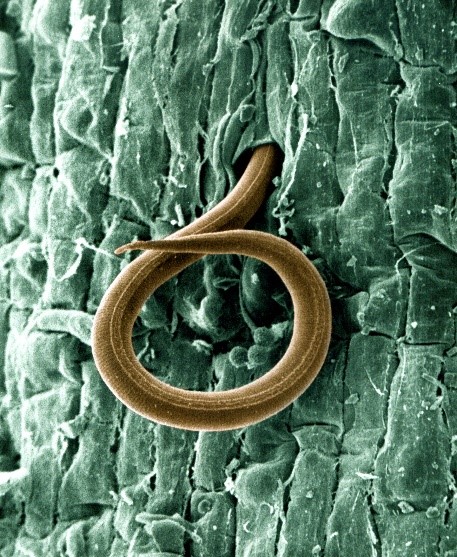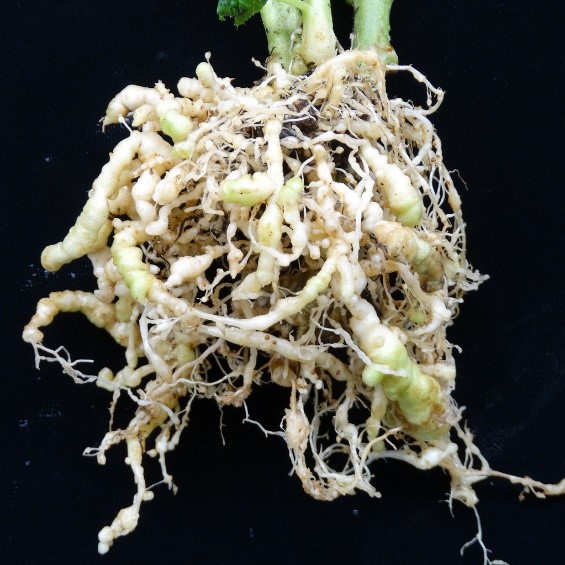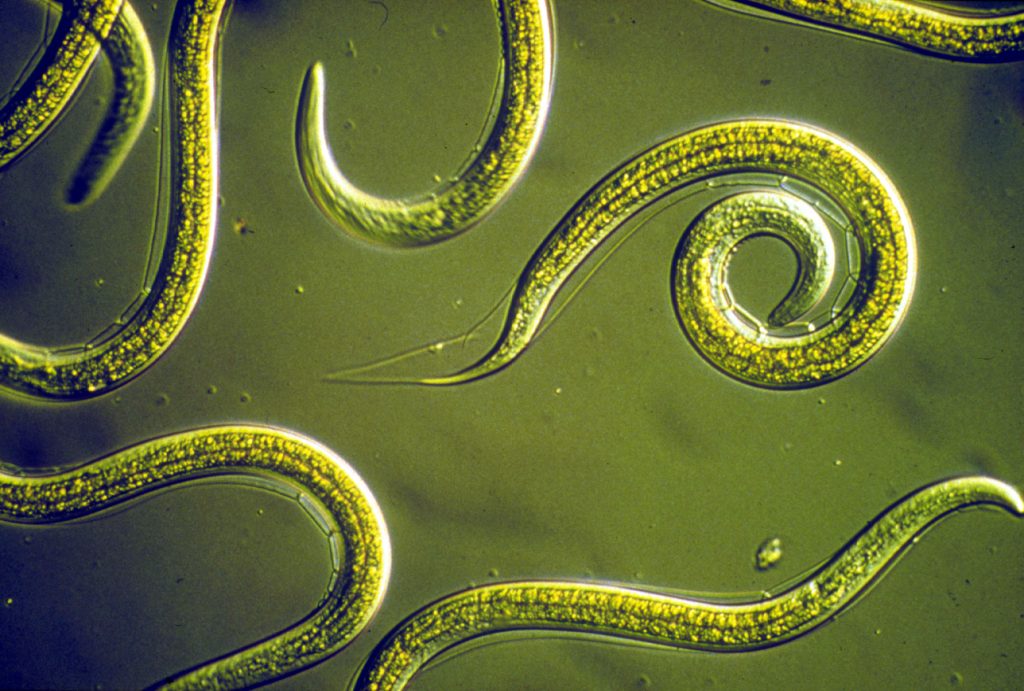Every 4 out of 5 animal species in the world are nematodes. Nematodes, or roundworms, are the most numerically abundant species on this planet (Riddle 1997). They are present in a variety of environments, able to adapt to a wide range of conditions. Nematodes can be beneficial, in terms of using them as a biological component of an integrated pest management system against a pest; but some species of nematodes can be a detriment to plants. These microscopic plant-parasitic nematodes have a needle-like feeding apparatus, called a stylet, that is injected in the cells of a crop plant to gather nutrients. The life cycle of the nematode is divided into 6 stages: egg, 4 juvenile stages, and the adult (Coyne 2014). The length of these life cycles is dependent on species, moisture, temperature, or other environmental factors, but can be as short as two weeks. In favorable conditions there can be several generations per season, which results in rapid population numbers from just a few nematodes. Additionally, many species are generalists and can be found on a wide variety of host plants. These plant-parasitic nematodes cause great impact to the agricultural industry, since the symptoms of nematode damage are often attributed to other causes. It is estimated that they reduce agricultural production yield by millions of tons annually, accounting for 14% of worldwide plant loss. This amounts to approximately $100 billion annually (Mitkowski 2003).

One of the most economically important species of plant-parasitic nematodes are root knot nematodes (Meloidogyne spp.) They have hundreds of host plants, including grasses, fruits, and vegetables, among others. Root knot nematodes (RKN) are classified as secondary endoparasites, meaning they will travel throughout the soil to locate host roots. Once they establish a feeding site inside of the roots, they will no longer move and will continue to feed at a fixed location. RKN invade the plant tissue as the second juvenile stage (J2). This wormlike juvenile will inject the stylet to gain nutrients and secretory proteins, which cause the plant cells to enlarge and divide rapidly (Mitkowski 2003). The male nematodes will continue to feed for several days, remaining in the J2 stage. They may or may not fertilize the females before moving into the soil to die off. Meanwhile, the female will remain permanently at the feeding site. She will continue to swell into a spherical form, where she will extrude an egg mass that is still attached to her body (Coyne 2014). A single female can produce anywhere from 500 to 1000 eggs.

The main symptom of RKN feeding is the formation of knotty roots called galls. The size and shape of galls will differ depending on the host plant, RKN species, and nematode density. The more populated and closer in proximity the nematodes are within the roots, the larger and more abundant the galls will be. Some other above ground symptoms caused by RKN is chlorosis (yellowing) of foliage, stunted or thinned growth of foliage, and water stress. Infected plants may exhibit wilting, even if enough water is provided. This is because infected plants cannot absorb and transport the required nutrients and water to the rest of the plant. RKN damage may be visible initially as a cluster of plants at the infection site, and then radiating outward as the nematode travels to other crop plants.
There are several disease management practices to control RKN from biological control, chemical control, cultural control, and plant resistance (Mitkowski 2003). Research on RKN and plant parasitic nematodes is extremely important to the agricultural community, as we continue to understand their biology further and manage them more successfully.

Author: Kayla Krenitsky
Associate Scientist
Frontier Science Partnerships
Sources
Coyne, D.L., Nicol, J.M. and Caludius-Cole, B. 2014. Practical plant nematology: a field and laboratory
guide. 2nd edition. SP-IPM Secretariat, International Institute of Tropical Agriculture (IITA),
Cotonou, Benin.
Mitkowski, N.A. and G.S. Abawi. 2003. Root-knot nematodes. The Plant Health Instructor. Revised 2017.
https://www.apsnet.org/edcenter/disandpath/nematode/pdlessons/Pages/RootknotNematode.aspx
Riddle D.L., Blumenthal T., Meyer BJ, et al., editors. Cold Spring Harbor (NY): Cold Spring Harbor Laboratory Press; 1997. https://www.ncbi.nlm.nih.gov/books/NBK20038/

